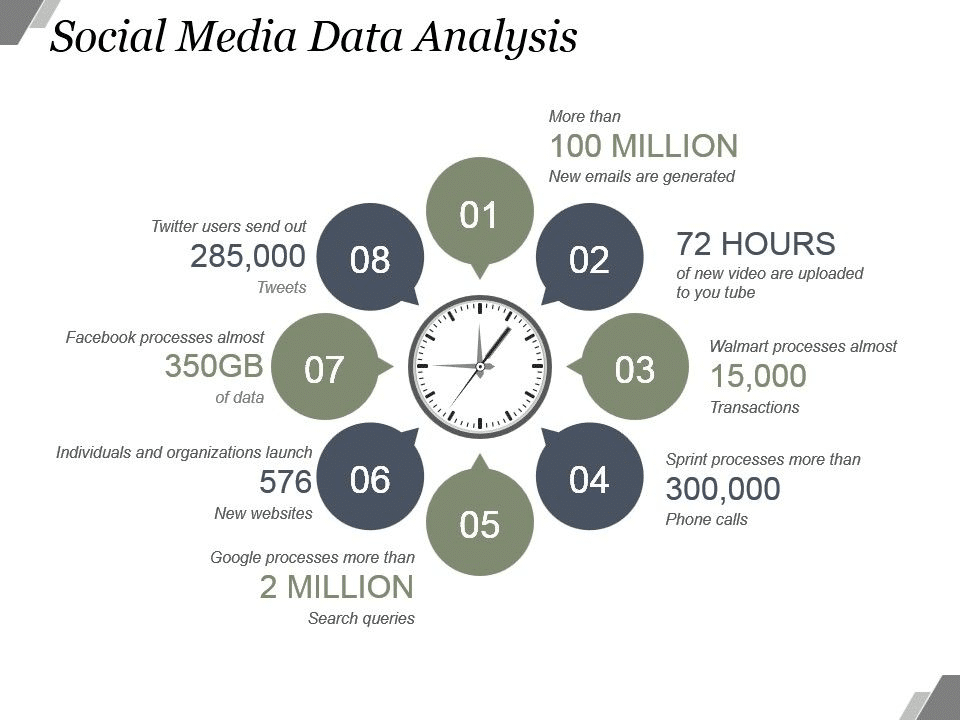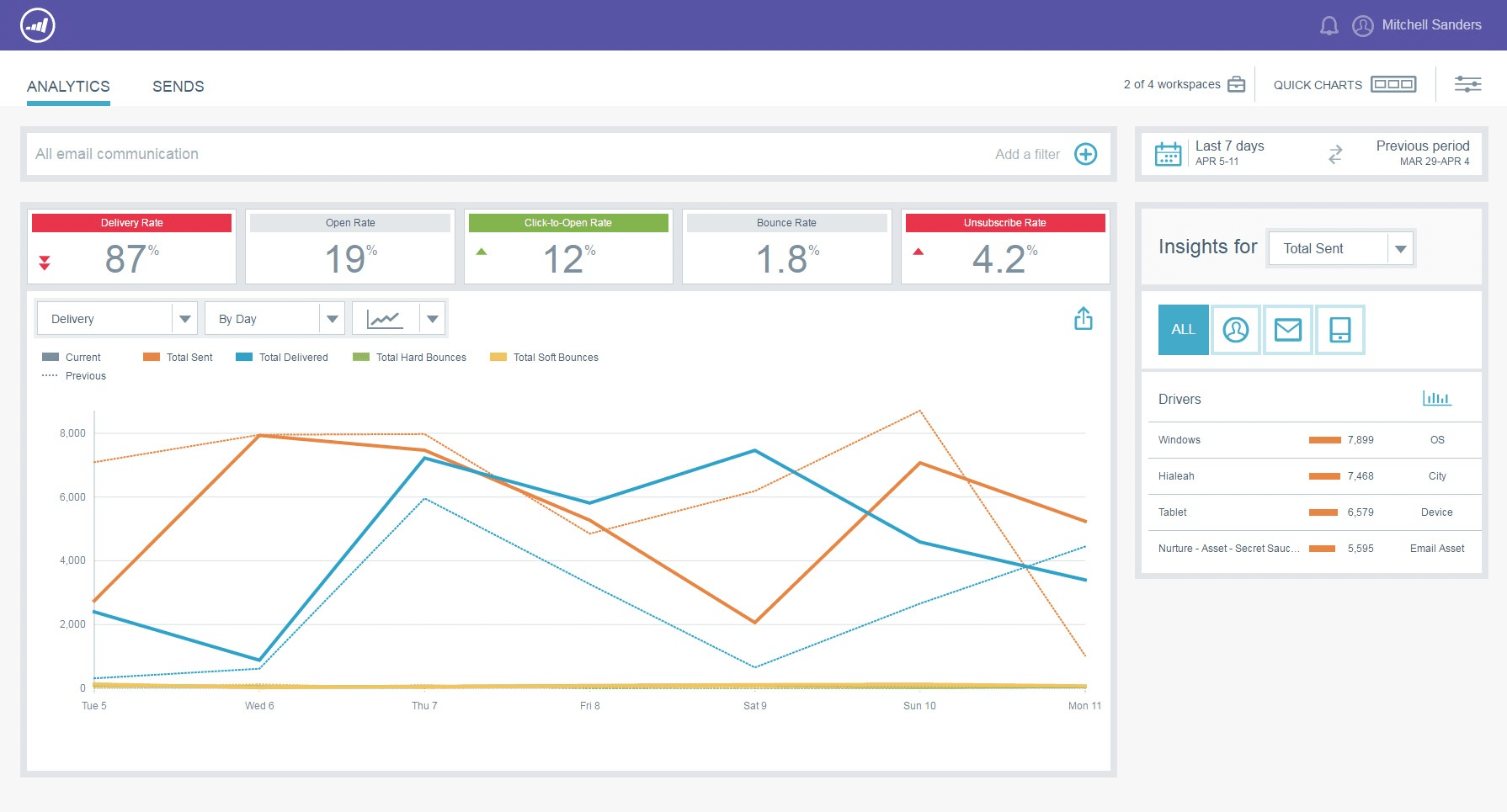Both small and large businesses have something in common – an influx of data. Until recently, however, larger corporations were the ones with the capacity to use this information.
Whether you call it data mining or data analysis, companies have been using these trends to establish better marketing campaigns, optimised social metrics, and online web personalisation.
But as a small business, budget and time constraints (among others) often prevent significant data analysis. The good news is that even small businesses have usable in-house data that doesn’t have to consume large amounts of time or finances.
Before jumping into specific data types, however, let’s look at the benefits.
What’s at stake
Ultimately, data is only as valuable as it is usable. When information becomes siloed within businesses, for instance, it can keep teams from providing the best customer service or buyer experiences.
Part of the problem is that manual retrieval and data entry use up valuable time that most small business owners and employees need to be investing elsewhere. Added to that, legacy systems (such as CRMs that are built for sales leaders rather than sales people) make data analysis even more difficult for small businesses.
Then there’s the issue of sheer volume. Big data by its very nature grows at alarming rates even for small businesses. Making data usable, in other words, is a significant barrier for small companies and startups.
What you as a small business owner may see, is poor communication or missing pieces of data. But what’s behind all these difficulties may be an inefficient use of your in-house data. In the long run, this can result in depleted buyer loyalty – a valuable commodity for small businesses.
What data to prioritise

Nowadays, the challenge isn’t getting enough data. The difficulty is knowing which data is worth spending your time on.
And the reality is that regardless of the size of your business you’ll need to pick and choose the right analytics to prioritise. There simply isn’t enough time, money, manpower, you name it, to harvest all the possible insights from big data.
For your website, for instance, should you focus on bounce rate or pageviews? When it comes to customer service, should you focus on CSAT, feedback completion, or some other metric? In sales should the focus be on customer retention data or buyer acquisition?
In a nutshell, putting priorities in place when it comes to your in-house data is an important place to start.
Here are a few questions to ask yourself as you narrow down data priorities:
- Are these metrics impacting my bottom line?
- Is this data too expensive in terms of budget or manpower?
- Will this data point affect my return on investment?
- Are there more actionable metrics to track when it comes to consumer journeys?
- Does this data help me choose a course of action or inform my decisions?
- Will this data help us get to our next growth point?
- Will insights help us improve a system or process that directly affects customer experiences?
In short, the data you choose to emphasize may differ from another small business. And that’s okay. Choose the insights that best serve the current growth stage and challenges of your business.
Accessible data types for small businesses
Since the big data boom, more and more free or inexpensive tools are available to small businesses. This means that data insights are no longer reserved for the heavy hitters in the business or tech worlds.
In fact, you probably already own significant data resources already.
1. Website traffic

For starters, website traffic can tell you a lot about your customers – what they value… and what they don’t. Bounce rates give you customer insights and so do the popular pages on your site.
But beyond sales and marketing metrics, website visitors also leave a footprint such as IP data or email addresses. These can be used to improve website personalisation, marketing messaging, and customer service.
Another in-house data type to consider is domain name data. Using this information, companies can discover if content has been scraped from their site, as well as any outbound links or backlinks tied to their domain.
What does this mean for small businesses? First, it can help protect customers’ privacy and financial information. In other words, domain name data gives you an edge against fraud and spammers. But beyond that, small businesses can also automate brand protection to safeguard their website investment.
Added to all of these other data types, small businesses can glean customer insights simply by noticing where site visitors come from. Here are a few things you can learn from site traffic:
- Where your customers like to learn
- Who they like to listen to
- What effect ad campaigns have for a website
Then, small businesses can position themselves on the right channels to educate and inform their target audience.
The whole point is this: if you gather client insights about what they value, you can then take steps to personalise customer experiences even further.
2. Customer interactions

Customer or patient interactions logged in CRMs (or Patient Relationship Management software for healthcare professionals) are like windows into buyers’ thoughts. Whether these exchanges happen via email, website, or phone call, these are some of the best insights.
Customer service representatives and those in sales often have a good read on the customers’ pulse. So even if you don’t have time to mess with all the data points, connecting with these buyer “experts” can give fresh insights about what your buyers value and what leads to more conversions.
In other words, data can be gathered organically through team conversations or video calls. That’s one of the benefits of communication platforms like RingCentral. Tools like these allow for clear communication while also integrating with CRMs and other data tools.
In other words, small businesses can keep their in-house data in sync with your in-person communication. As a result, every team member automatically has access to every piece of information without extra manual input.
Along the same lines, some small businesses gather data about users through phone calls. And many need to know how to improve these customer experiences. But as small companies expand to new regions or countries around the world, phone data is an important piece of the puzzle.
That’s one way unified communication services come into play. A one-stop solution that offers local numbers, free global extension to extensions, and much more, improves team productivity and thereby customer experiences.
3. Social media

As was already mentioned, small businesses have to pick and choose what data to prioritise. And since over 80 percent of individuals navigate to business websites from social media, these platforms are like an extension of your website.
Using this data, small businesses can improve web personalisation and customer support. That’s because social media analytics go beyond demographics and buying history.
The real value of these data points for customer service is insights about behavioural trends, buyer intent, user sentiments, and beyond. For instance, one company used social media analytics to discover negative or positive sentiments surrounding their services.
Most social media outlets also have their own free versions of analytics tools. Twitter insights, for instance, helps individuals see top performing tweets or metrics about ad campaigns. But beyond that, small businesses can access free trials of sentiment analysis tools.
All this to say, social media data is VERY accessible for small businesses. And when coupled with a data-driven website, these insights can yield long-term results when it comes to lead generation.
4. IP address data

As was mentioned above, your website brings in more insights than you may realise. IP address data reveals geolocation information that can help small businesses personalise their website for customers.
This geolocation data can be used to pre populate forms on websites, customise discounts and offers, or recommend personalised content. In other words, IP addresses – a seemingly insignificant string of numbers – can help small businesses personalise online experiences.
Geolocation data can also be used to gather more information for better phone calls and customer service. By way of illustration, using location intelligence, small businesses can access relevant phone numbers to fuel better lead generation.
5. Email insights

If we’re going to talk simple and inexpensive, email outreach is an efficient way to gather buyer insights that fuel better customer service and personalisation. By way of example, sending a simple onboarding survey and welcome email can give you firsthand feedback from your leads.
Another way to leverage insights is through a free email platform like Mailchimp. Small businesses can access reports, run A/B testing, and much more to see what resonates with buyers.
The point is this: regardless of where you’re at with your small business, there are always data sets and accessible tools for your stage of growth.
Resources and tools for small businesses
Because of all the free or inexpensive tools currently available, small businesses can use in-house data to improve customer service and buyer experiences better than ever before.

That’s why we wanted to offer a few suggestions of inexpensive resources to start fueling better web personalisation and customer service.
1. Buffer: Social media analytics
Plan and publish content ahead of time, measure your social media performance, and efficiently manage engagement. Plus, since with data such as audience demographics, small businesses can fine-tune both website and social messaging. Buffer offers a free publishing plan for three channels. Plus, their analytics tool starts at $35 a month.
2. Finteza: Website traffic quality and performance metrics
This tool reveals traffic quality as well as how your site is performing. Not only does it help analyse web traffic, it also helps build high-performing advertising campaigns. In other words, using your website data, you can analyse your audience, set up targeted campaigns, view webpage performance, obtain real-time stats, and much more starting at $25 a month.
3. Free geolocation data: Geolocation data for better customer experiences
Leveraging your IP address data for better web personalisation doesn’t have to be expensive. For instance, some geolocation providers like IPinfo offer free plans up to 50,000 requests per month. With this information, you can customise web pages, forms, and content based on viewers’ location.
4. Google analytics: Traffic insights for more lead generation
For small business needs, Google Analytics is free, and it integrates with websites and social platforms, giving you traffic insights. View user behaviour, traffic sources, bounce rates, popular times of day, and much more. With this information, small businesses can improve poor-performing pages, highlight content that resonates with their target audience, and discover traffic insights to fuel more lead generation.
5. Capsule: Communication data in one place
This CRM offers a free option for small businesses up to 250 contacts. They act as a hub for all other integrations such as Gmail, Mailchimp, Quickbooks, Zapier and more. Small businesses can get their data in one place to improve communication with leads. For more details about picking the right CRM, check out this article.
6. RingCentral Glip: Secure video chat and data sharing
For free you can host a 24 hour meeting duration of up to 100 people, share files, activate integrations, and manage tasks so no piece of data goes missing. Not only is it secured with enterprise-grade encryption, but you can easily keep the conversation going with one-click group chats. RingCentral also integrates with CRMs and calendars so that important pieces of data never go missing. The result? Better customer satisfaction and personalised services.
6. Hubspot: Visible data for better conversions
Scattered data can lead to slower sales cycles. But Hubspot keeps all the data visible so small businesses can improve conversions. The only downside is that as your sales teams grow, the pricing does jump significantly. However, for small teams of 2-5 people, there are free or accessible paid plans.
7. Mailchimp: Built for small businesses
Mailchimp is explicitly built for helping small businesses. Their free plan, for instance, includes up to 2,000 email contacts as well as a marketing CRM, website builder, and more. In other words, you can view data insights, reach the right people, create better campaigns, and automate your marketing within one very affordable tool.
All this to say, using data is easier than ever for small businesses who value customer service and personalised buyer experiences. Small business or not, in-house data is more accessible than ever before.
By narrowing down the information that matters for growth points and finding the right tools, big data can fuel efficient growth for small businesses.
Originally published Mar 22, 2021, updated Jan 16, 2023
